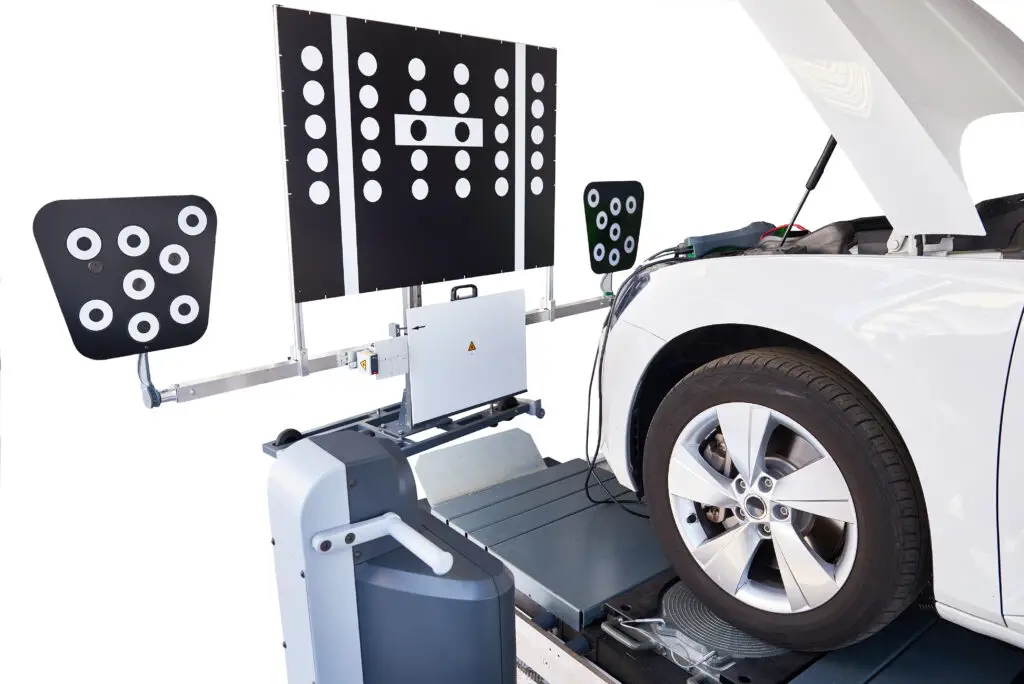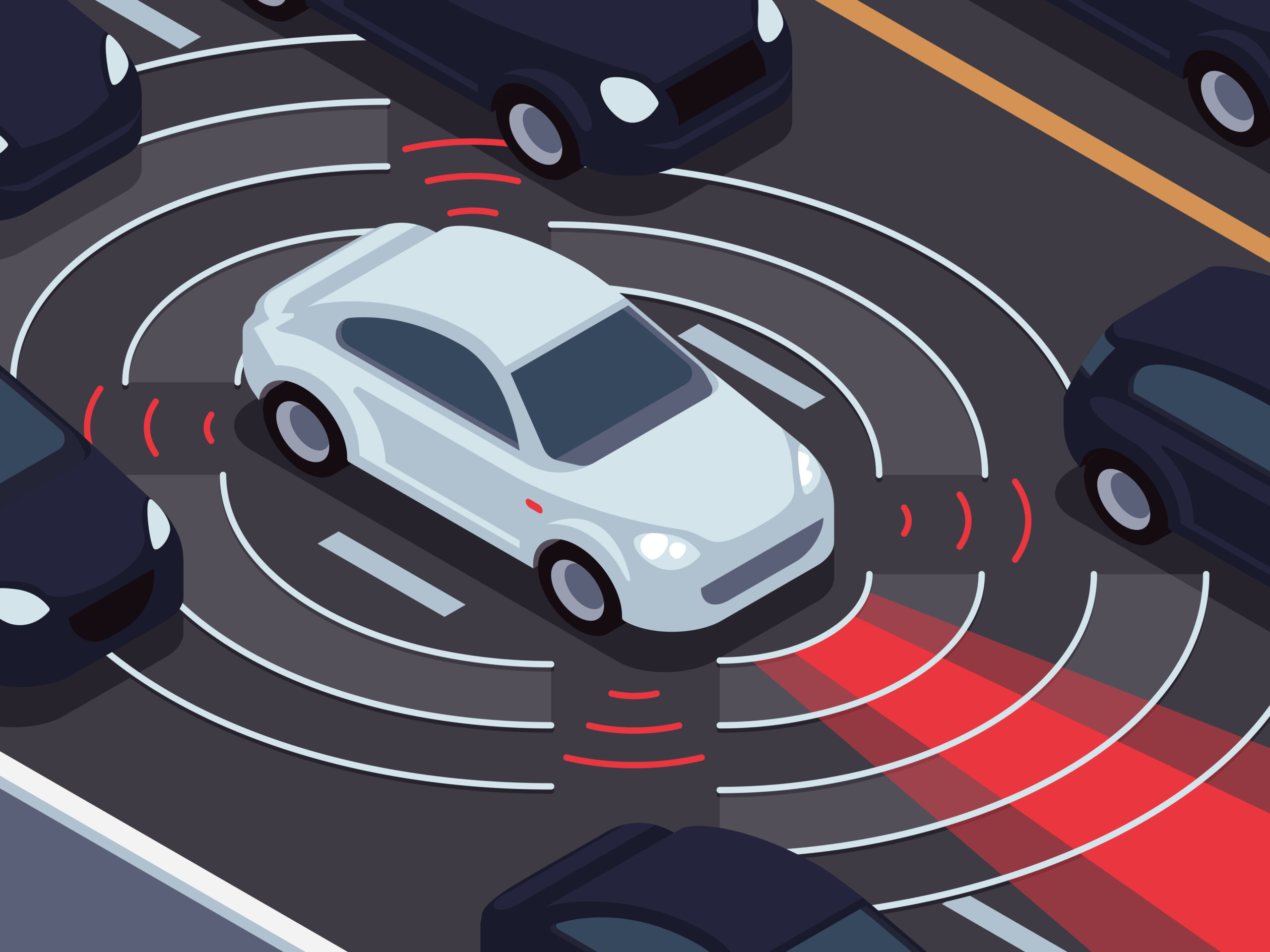ADAS stands for Advanced Driver Assistance Systems. That is a technology that is quickly becoming more common in new cars. It is designed to help drivers avoid accidents and improve safety on the road. ADAS systems include features such as lane departure warning, forward collision warning, blind-spot monitoring and more. Windshields are an essential part of ADAS technology. That’s why at Car Glass Canada, we offer auto glass replacement for vehicles with ADAS-enabled windshields.
There is a lot of information out there about ADAS, and it can be tough to know where to start. In this blog post, we’ll break down everything you need to know about these technologies, from what it is to how they can benefit you. Keep reading to learn more!
What is ADAS?

Advanced Driver Assistance Systems (ADAS) are groups of electronic technologies that aim to improve road safety. They can provide features like:
- Braking assistance;
- Lane departure warning;
- Adaptive cruise control
- and many others.
ADAS technologies are constantly evolving, with new features being added all the time. Those technologies are becoming more and more advanced. This technology has the potential to revolutionize the automotive industry, making driving safer and more efficient than ever before.
History and development of ADAS
ADAS technologies have been around for many years now, but they are only recently becoming more common in new cars. The first features were introduced in the 1980s, with anti-lock brakes (ABS) and electronic stability control (ESP). Those two are the most notable examples. In the 1990s, ADAS technologies became more widespread, with features such as traction control and brake assist becoming available on more vehicles.
In the 2000s, ADAS technologies really began to take off. This was thanks partly to the increasing availability of sensors and computing power. That made it possible for these features to become more sophisticated. We’ve seen ADAS features such as lane-keeping assist and self-parking become increasingly common in recent years.
It’s clear that ADAS technologies are here to stay, and we can only expect them to become more advanced in the years to come. As those technologies continue to evolve, they will no doubt have a significant impact on the future of the automotive industry.
How do ADAS work?
ADAS technologies use a variety of sensors to collect data about the road and the driver’s surroundings. This data is then used to provide information that can help the driver make better decisions. This also helps to avoid accidents and improve their overall driving experience.
One of the essential parts of these is the windshield. That’s because many ADAS features rely on data collected by sensors that are mounted on the windshield. For example, lane departure warning systems use cameras to track the lane markings on the road and provide a visual or auditory warning to the driver if they are about to stray from their lane. Similarly, forward collision warning systems use sensors in the windshield to detect when a vehicle is getting too close to the one in front of it and will provide a warning to the driver so that they can take action to avoid an accident.
Types of ADAS systems

There are many different types of ADAS systems, each with its own unique features and benefits. Here are four major types, along with a brief description and examples of each.
Warning
The driver is informed about potential hazards on the road with a warning ADAS system. These systems are designed to help avoid accidents and make better decisions. The vehicle alerts you when it detects an object in your blind spot or if someone steps off of their curb without looking first.
A lot can go wrong before even considering what happens during traffic jams. Some examples include lane departure warnings which tell drivers where they’re veering away from safely, or forward collision modes, which warn drivers ahead a couple of seconds before impact, so they have enough time to do something.
Monitoring
Monitoring ADAS systems can be used to improve safety on the road and while parking, driving or reversing.
Rearview cameras and parking sensors are two examples of this monitoring feature that provide information about your surroundings, which could help you avoid an accident.
Automated
That type of system in cars is designed to help avoid collisions in emergency situations.
In case of a possibility of a car crash, these advanced technologies can take over your vehicle so that it doesn’t cause more damage or injury than necessary.
The most common example of this feature is Automatic Emergency Braking (AEB). This system will automatically brake for you if it senses an obstacle in front of your vehicle or if you’re about to rear-end the car ahead.
Adaptive
The technology behind adaptive ADAS systems is changing the way we drive to safer by using data from our surrounding environment, such as speed difference between yourself and other cars in your lane or if someone might be coming up quickly on either side of you. This information can then be used when making decisions about where the car should adjust its position on the road.
The most popular example of the adaptive type of ADAS is Adaptive Cruise Control (ACC). The system uses laser and radar sensors, usually located in the car’s windshield or front bumper, to detect whether there are other vehicles in front of you to constantly adjust your speed based on distance from theirs without any input from the driver.
Benefits of using ADAS technology in cars
There are many benefits of using ADAS technology in cars. Some of these benefits include:
- Improved safety on the road;
- Avoidance of accidents;
- Better decision making while driving;
- Enhanced overall driving experience.
These systems can help make your drive more enjoyable by providing you with information that you wouldn’t otherwise have and by taking care of some of the more tedious tasks associated with driving.
If you’re considering purchasing a car with ADAS technology, or if you’re looking to upgrade your current vehicle with ADAS features, be sure to research the different types of systems available so that you can find the best ones for your needs. With so many benefits, there’s no reason not to take advantage of this cutting-edge technology!
Risks of using ADAS technology in cars
There are two main risks associated with using ADAS technology in cars:
- Drivers may become too reliant on the system and may not pay attention to their surroundings as much as they should.
- Systems can sometimes give false positives, which could lead to accidents if the driver relies too heavily on the system.
It’s important to do your research and make sure that you understand how ADAS systems work before relying on them too much. With proper understanding and caution, you can minimize the risks associated with using ADAS technology in your car.
What components of ADAS requires recalibration, and in what cases?

One of the most important things to keep in mind with ADAS technology is that it requires recalibration. There are several cases when systems may need to be calibrated. The most common is a car’s windshield replacement. Another typical reason is changing wheels height, and last but not least is calibration after a collision.
Of course, you need to be sure that your car was correctly repaired after an accident before you can make any calibrations. Otherwise, the system may work incorrectly.
There are two types of calibration technicians can perform:
Static calibration is when all vehicle cameras are realigned to factory settings using special software and calibration targets. This type of calibration is usually performed after windshield replacements. Your car must be stationary during the adjustment process.
Dynamic calibration, also called road testing, is a process of the ADAS system learning car’s new dimensions while driving, so the technician will take your car for a ride. The primary tool for this type of calibration is a portable computer with special software. Technicians can also use a hand-held diagnostic device, which is connected to the car via an OBD2.
In case you are not sure if your ADAS system needs to be calibrated, it is best to take your car to a professional. Technicians will be able to properly assess the situation and make sure that the system is working correctly.
In general, it is a good idea to get your ADAS system recalibrated every few years. Or you can do it sooner if you’ve had any work done on your windshield. By staying up-to-date on your ADAS calibration, you can ensure that your system is working correctly. Be sure that you’re getting the most out of this cutting-edge technology!
As ADAS technology continues to evolve, it’s important to stay informed about the latest developments. By understanding what components of the system require recalibration and in what cases, you can ensure that your ADAS system is always working correctly. ADAS can provide you with years of safe and reliable driving with proper care and maintenance. So don’t wait, get your ADAS system recalibrated today.




